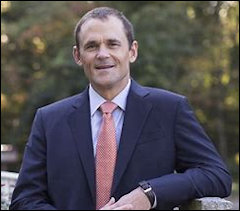The University of Virginia’s Board of Visitors has adopted a new strategic plan, The 2030 Plan — the first under the leadership of President Jim Ryan. If UVa achieves its goals, says Ryan in the introduction, “We will be the leading public university in the country in 2030 and one of the very best in the world, whether public or private.”
The 2030 Plan expresses many high-minded goals — among them, to recruit “talented, diverse and service-oriented” students; recruit and retain excellent faculty and administrative staff; prepare students to be “servant leaders” in a diverse, globally connected world; establish leadership in critical areas of research; and offer one of the best values in higher education.
The plan is devoid of details on how the university will attain these goals, but it appears that the board will be delegating much of its authority to Ryan and his staff. The Daily Progress notes that the board “will approve three-year funding plans at a strategic level” but leave “line-item allocations” up to senior officials. “Previously board members would have approved those expenditures as well.” Moreover, UVa’s administration will have the authority to adjust the funding plan by as much as $15 million without full board approval.
While illuminating institutional goals to boost UVa’s national standing as one of the nation’s great universities, the strategic plan is silent about an issue of vital interest to Virginians — affordability. Rather than emphasizing affordability, the strategic plan emphasizes “value”:
As a service to the Commonwealth and beyond, we will remain not simply one of the best universities in the country, but also one of the best values in higher education. We will equip our students with the knowledge, skills, and habits of mind that will enable them to pursue meaningful and productive careers, including securing their first jobs after graduation. Whether they intend to start a business or non-profit, discover a cure for a disease or pen a novel, teach children or care for senior citizens, our graduates should be ready to contribute not just to their own well-being but to the greater good. We will also remain outstanding stewards of public financing.
One of the university’s key initiatives will be “significantly expanding” its SuccessUVA financial aid program “to enable more low- and middle-income students to attend the University and engage in all that we offer.” Furthermore, the university will expand student services: More academic and career advising, a new health and wellness center to promote student well being, an expanded Multicultural Student Center, and a Contemplative Sciences Center to “foster resilience.”
How will UVa finance these budget-expanding initiatives? One way, noted in the Daily Progress article, will be to tap the income thrown off by the university’s $2 billion Strategic Investment Fund. But the plan reveals nothing about:
- Tuition and fees. Thanks to increased state support, UVa found it politically expedient to restrain from increasing in-state tuition and fees this year. The 2030 Plan gives no indication, however, of how aggressively the University will need to raise tuition revenue in future years to meet its goals.
- Out-of-state enrollment. One way state flagship universities raise revenue is to charge elevated tuition for out-of-state students and then increase out-of-state enrollment. Some of that lucrative out-of-state revenue may be used to reduce tuition for in-state students, but much of it is diverted to programs reflecting administrative priorities.
- Financial aid. The Plan indicates that the University is committed to keeping tuition affordable for lower- and middle-income students. In other words, the university will build upon its “high tuition/high aid” model” which extracts wealth from well-to-do families to redistribute to lesser-income families. This approach, given UVa’s status as a public institution, arguably represents a form of taxation, but the plan declines to make the point explicit. How much wealth will be transferred? UVa is not likely to reveal that figure to the public.
- Enrollment of lower-income students. When accounting for financial aid, lower-income students can attend UVa for less than any other public university in Virginia (save William & Mary). The key to making this high-aid strategy work is enrolling one of the lowest percentage of lower-income students in the state. Will UVa continue this policy or will it admit more lower-income students who require more financial aid?
- Other expenses. Tuition & fees account for roughly half the cost of attendance. Room, board, books, and other expenses account for the other half. The 2030 Plan offers no clue as to whether it will restrain or accelerate the increase in these costs.
- High-amenity student services. The Plan indicates that it will expand student services beyond the traditional goal of providing an education. As noted above, UVa will provide more counseling and career services, construct a new Health and Wellness Center, foster “resilience” at a Contemplative Sciences Center, expand its commitment to multiculturalism, and raise funding for an “athletics master plan.” There is no indication of how much any of this will cost or how it will be paid for.
One last observation: While the Plan alludes to “diversity,” the term is always paired with “inclusion.” The document does not once discuss intellectual diversity. By the standards of higher education today (a low bar, to be sure), UVa tolerates a fair number of conservative and centrist scholars. They are a minority, to be sure, but they do exist. Whether UVa will remain committed to preserving a diversity of viewpoints, however, is an open question. The strategic plan does not identify it as a priority.



